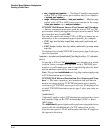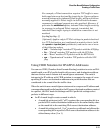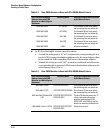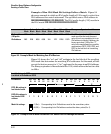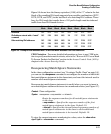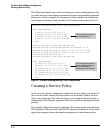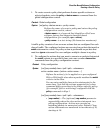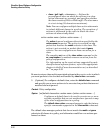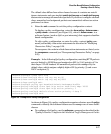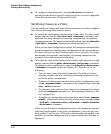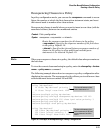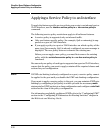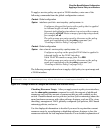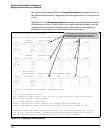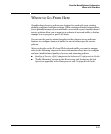
Classifier-Based Software Configuration
Creating a Service Policy
• class < ipv4 | ipv6 > <classname > — Defines the
preconfigured class on which the actions in a class-
action statement are executed, and specifies whether
the class consists of IPv4 or IPv6 traffic. The class name
is a text string (64 characters maximum).
Note: You can configure multiple class-action statements
to include different classes in a policy. The execution of
actions is performed in the order in which the class-
actions are numerically listed.
action <action-name > [action <action-name > ...]
The action keyword configures the action specified by the
action-name parameter. The action is executed on any
packet that matches the match criteria in the class. The
action is not executed on packets that match ignore
criteria. You can configure more than one action for a
class.
The complete no form of the class action command or the
no <seq-number > command removes an action from the
policy configuration.
For information on the exact actions supported by each
classifier-based software feature, refer to the appropriate
chapter in the ProCurve documentation set, as described
in “” on page 9-33.
Be sure to enter a class and its associated actions in the precise order in which
you want packets to be checked and handled by class action commands.
3. (Optional) To configure a default class, enter the default-class command
and specify one or more actions to be executed on packets that are not
matched and not ignored.
Context: Policy configuration
Syntax: [no] default-class action <action-name > [action <action-name > ...]
Configures a default class to be used to execute one or more
actions on packets that are not matched nor ignored in any
of the class configurations in a policy.
The default-class action command supports only the feature-
specific commands supported in the class action command.
The default class manages packets that do not match the match or ignore
criteria in all classes in a policy, and otherwise would have no actions per-
formed on them.
9-26



